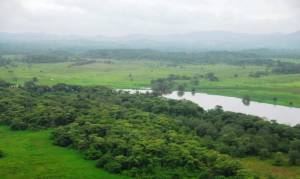Nicaragua Gov. Leases Rama-Kriol Lands for Canal

HAVANA TIMES — The Government of Nicaragua announced today that it reached an agreement with indigenous leaders in the South Caribbean to lease an extensive portion of land in the region where the route of an inter-oceanic would pass, reported dpa news.
According to the official website, the consent agreement for land use was signed on Tuesday in Managua by members of the commission of the Grand Interoceanic Canal and representatives of nine communities of the Territorial Rama-Kriol Government (GTRK).
The government said the agreement, gives the executors of the canal [a consortium headed by Chinese billionaire Wang Jing] permission to use the land in an area of 263 square kilometers. The papers were signed allegedly after two years of consultations and discussions with representatives of both ethnic groups.
Hector Thomas Macrae, president of GTRK said he signed the agreement because he believes that the canal “will contribute to the good life of the communities, generating well-being, safeguarding the culture and respecting ancestral traditions”, reported the Ortega government website.
He said that the Rama and Kriol indigenous communities inhabit a territory of 407,000 hectares on firm land plus 22 cays located in the Caribbean Sea.
Meanwhile, Telemaco Talavera, spokesman for the Grand Canal Commission, said the culture of indigenous peoples, national laws, international treaties and the United Nations Declaration on Indigenous Peoples would be respected.
However after learning of the signing of the agreement, a group of Rama-Kriol community leaders said it was an “illegal” act, since prior consultation with the population of the area never took place.
Becky McCray, coordinator for Rama-Kriol community justice told La Prensa newspaper that the government “has divided (the indigenous) so they can advance their project, because consent on the part of the communities does not exist.”





